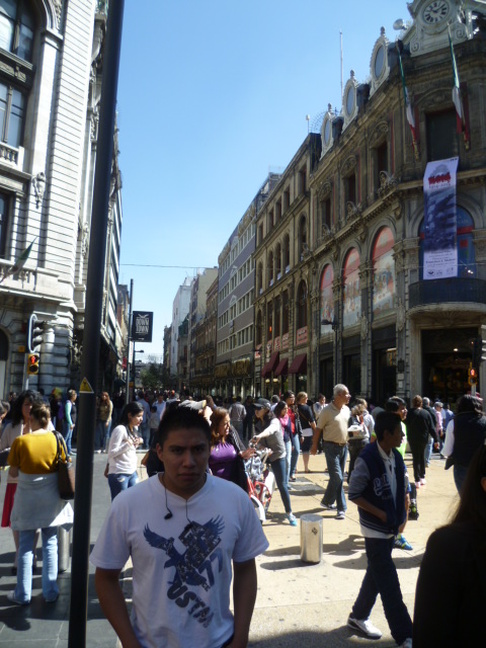 Madero Street , near the main plaza in Mexico City.
Madero Street , near the main plaza in Mexico City. Comparing a street in Mexico City to a world-famous street in Istanbul might seem a provocation - and that it is. I want to lure readers into the mental exercise of repositioning Mexico City into a different category of place.
Shedding some preconceptions opens the mind to a revealing comparison that extends beyond two lively pedestrian streets. These cities have a range of things in common and, in fact, if I had to choose a city that Mexico City most reminds me of, it just might be Istanbul.
Mexico City and Istanbul are very old cities, built upon layers of earlier civilizations, with huge populations (well over 10 million inhabitants each). They are filled with a vast array of historical and architectural treasures and have teeming streets, vast markets, elegant neighborhoods, and share an exhilarating vibrance. Incidentally, both cities were built on water, although in Mexico City's case the water has almost entirely disappeared. Comparing these cities also makes sense from an economic perspective: Mexico and Turkey have roughly equivalent incomes per head. It's illuminating to see the contrasts between cities of similar resources and size managing the challenges of creating an attractive and healthy urban environment.
But while Istanbul is a mecca for tourists from all over the world, Mexico City remains a relative tourist backwater in comparison. It hasn't yet gained the recognition it deserves for the positive changes it's experienced over the last years and for its wealth of attractions and the impressive ambience it has in so any areas.
Below is another image of Madero Street in Mexico City (left), and a picture of Istiklal Street in Istanbul (right).
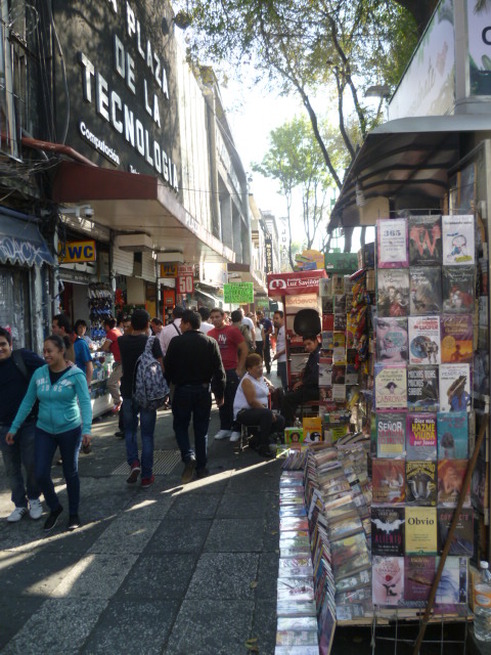 Lázaro Cárdenas Avenue near the historic center.
Lázaro Cárdenas Avenue near the historic center. Mexico City has pretty much everything any tourist, adventurous or not, could ask for. It has countless museums, shopping for all tastes, regional and international food, and overall a breathtaking level of urban vitality.
There are only two cities in North America that offer this kind of dense city experience: New York and Mexico City. In Mexico City, however, you can immerse yourself in the urban scene for a small fraction of what it would cost in New York. I think Mexico City qualifies as one of the best kept secrets of North American travel.
What I imagine to be Mexico City's unglamorous reputation is mostly a relic from the past that will fade as this city continues to improve and gains the attention it deserves.
One of the things that makes Mexico City such an engaging and fascinating city is that it is over-endowed with a lot of friction. Friction, in this sense, is the the density of details on streets, details that make you want to stop and take a look, buy something, or have a seat and get something to eat or drink. You can see this in most of the pictures I've included in this posting. Mexico City just overwhelms your senses with the array of things on offer. A walk along the streets here is rarely uneventful.
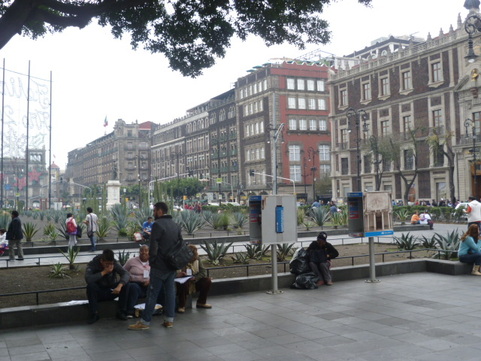 Looking away from the main cathedral on the plaza, under hazy skies.
Looking away from the main cathedral on the plaza, under hazy skies. Below are images of some of the vibrant (often pedestrianized) streets of the historical center.
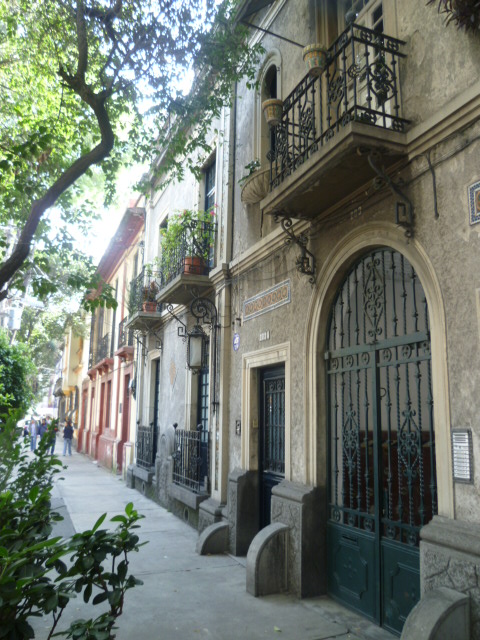 Residential street in Condesa.
Residential street in Condesa. West of the center is Zona Rosa, which reminds me of modern areas of European cities, such as Barcelona or Madrid. Zona Rosa was once the wealthiest area of the city, but went into decline after the 1920s. It has since reinvented itself as a major center for shopping and entertainment. I think most tourists probably stay in this area because of its convenience, wealth of hotels and restaurants, and general attractiveness. Maybe it's the least exotic part of the city and most accessible for visitors.
South of the Zona Rosa lie the Bohemian neighborhoods of Condesa and Roma. These areas, like Zona Rosa, have a history of being wealthy neighborhoods that went into decline as wealthy populations moved further west. They are built on a smaller, more intimate scale than Zona Rosa, and from what I observed, are gentrifying rapidly. This is the place to go to find trendy cafes and restaurants set in generally quiet and green streets.
Further west of the Zona Rosa you will find the very exclusive and newer centers of wealth in neighborhoods such as Polanco and Lomas de Chapultepec. These areas, like clusters of the super wealthy in most large cities around the world, impress you with the extraordinary riches on display including high-end restaurants, stores and hotels.
This is just a quick summary of some of the neighborhoods I've visited in this city. A week or two here would barely scratch the surface of what's on offer.
Below are views of streets in Condesa and Zona Rosa.
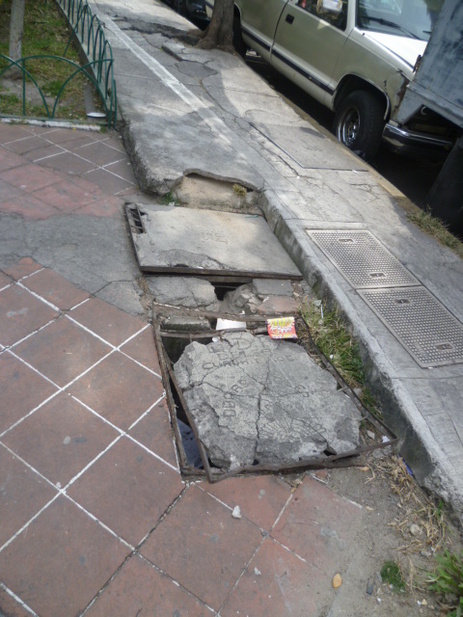 Rather typical hodgepodge mess of a sidewalk in many parts of Mexico City.
Rather typical hodgepodge mess of a sidewalk in many parts of Mexico City. The divergence is immediately evident in the differing attention to the details of infrastructure such as streets, sidewalks and other public spaces. It's plain to see in the obviously far more inequal society that Mexico is. And in all neighborhoods, rich and poor, the difference is there in the far poorer (if somewhat improved) air quality. These issues are important to raise because together they conspire to significantly drag down Mexico City's quality of life. Without addressing them effectively, Mexico City will never be as great a city as Istanbul.
Ramshackle infrastructure is one of the characteristic features of Mexico's cities. It's apparent almost everwhere you go, with some exceptions, notably the infrastructure used by the upper classes, such as international airports. The state of most streetscapes is stunningly apocalyptic. There is a haphazard look to construction, a seeming lack of any master plan, scraggly trees where they exist, and vast expanses of roughly poured concrete, with garbage strewn everywhere. This raggedness, combined with unattractive buildings spread out in a kind of low-density sprawl, makes for a uniquely unpleasant city experience in a large part of Mexico City's area. What I've written above about the delightful neighborhoods is true, but they make up a just one part of the city. Mexico City is so big that even if only 30% of its area is pleasant, that provides a huge area for tourists - and the wealthy - to enjoy. But it is truly a different world when you get away from the nicer areas.
Istanbul, in contrast, is a proud European city. It obviously takes pride in its general tidiness and sense of order in all of its neighborhoods, even the poorest. Istanbul, also a city of great contrasts, has much smaller areas of despair, and these are being renovated at a feverish pace (often to the dismay of those fighting for the rights of the poor). One reason for the less striking contrasts is the lower level of inequality in Istanbul. The poor are poor, but seemingly not as desperately poor as in Mexico City.
The pictures below contrast the streets of Mexico City (top 3 pics) with those of Istanbul (bottom 3). Although I may have chosen nice examples from Istanbul, these are the norm, not the exception. I don't think I saw one street in Mexico City as nicely laid out and constructed as most common newer streets in Istanbul. Istanbul is another world, a city exhibiting a high level of urban organizational competence.
Finally, air quality is another constant reminder that Mexico City has a long way to go to reach a high quality of urban life. In most of the pictures I have included here, you can notice the smog and a general haziness to the air. I wonder about the incidence of respiratory disease in this city and have read that children are particularly impacted, with high rates of asthma. Mexico City is ranked right up there with Beijing in terms of its horrible air pollution.
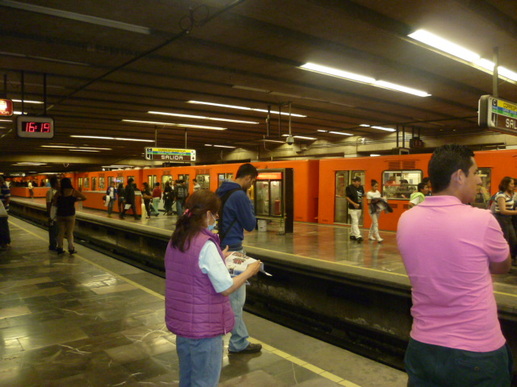 Subway platform, squeeky clean.
Subway platform, squeeky clean. During rush hours the metro is extremely crowded and not pleasant to use, but otherwise it's a great way to get around the city. I was impressed with the general level of cleanliness (easily cleaner and better maintained than the New York subway) and the polished stone floors. It's also an ideal place to see a wide spectrum of people and to witness the never-ending drama of vendors, musicians and others passing through the cars.
The metro does not, however, cover all of the city. In fact, considering Mexico City's population, the system is smaller than it should be. Far too large a share of public transport takes place on terribly crowded buses (often privately run) that are not integrated with the metro system. If a low-wage Mexican worker has to take a couple of buses, or a bus and then the metro, to get to work, this can add up to a huge amount of time and significant cost. There are plans afoot to modestly expand the metro system in the next few years.
Below are couple of pictures of the artwork in one station and the unusual rubber-tired trains (as in Paris) which make for surprisingly quiet and smooth operation.
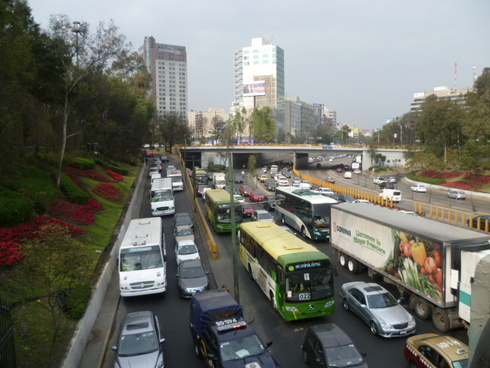
Because the upper and middle classes generally don't use public transport, cars dominate the streetscapes of this city. And because this influential constituency doesn't use the trains or buses, they don't demand improved public transport. The problem perpetuates itself. With ever larger numbers of cars on the crowded streets, bus transport becomes slower and slower and air pollution stays at levels that are totally unacceptable.
Despite being a place very well worth a visit, without addressing its serious societal inequalities, including the stark divide in mobility, Mexico City will be condemned to an average quality of life well below its peers around the world. For tourists on a one or two week visit it's rather easy to ignore most of these quality-of-life issues. I believe most visitors will come away positively surprised and charmed. I know I will be back.
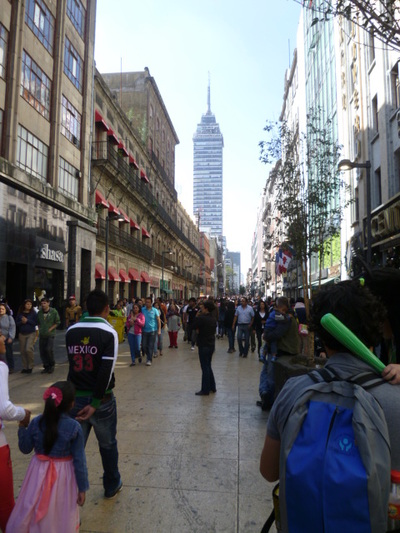
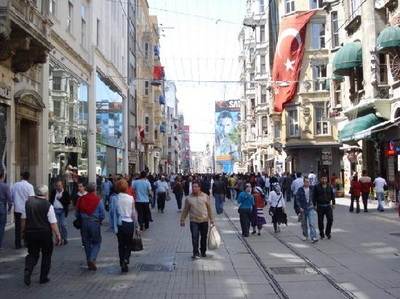

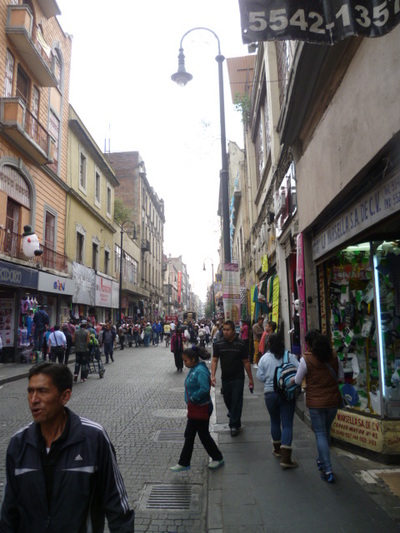
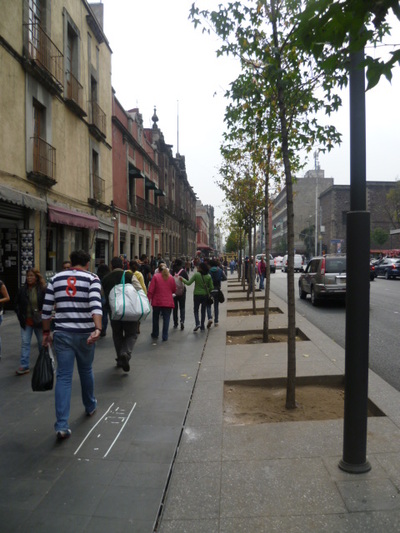
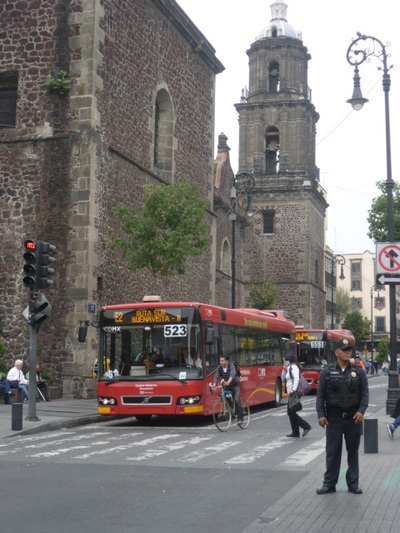
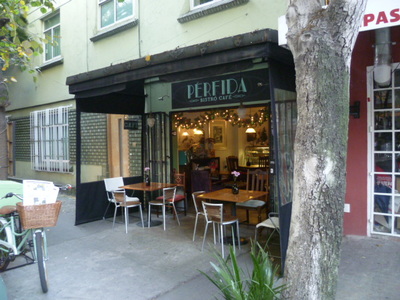
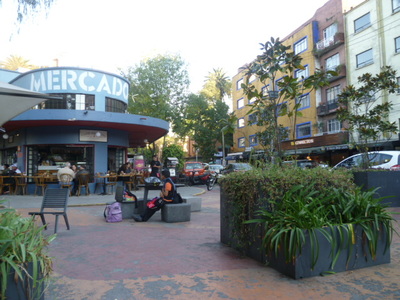
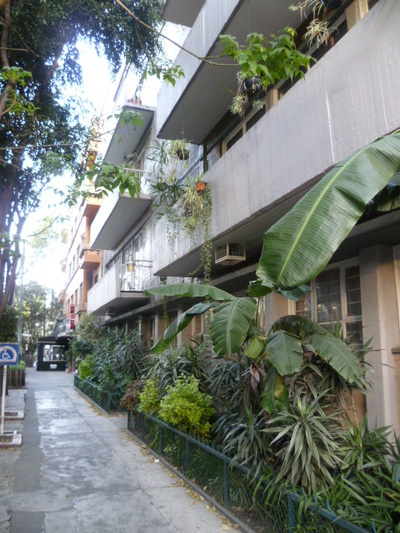
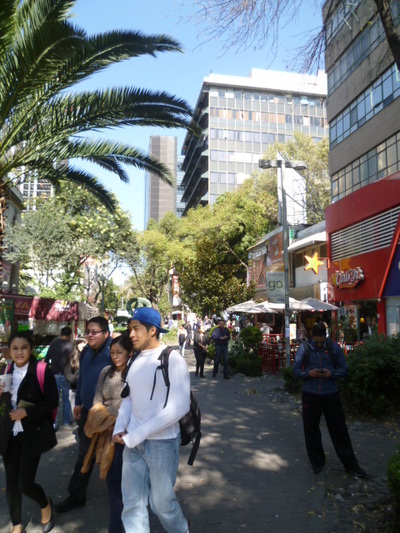
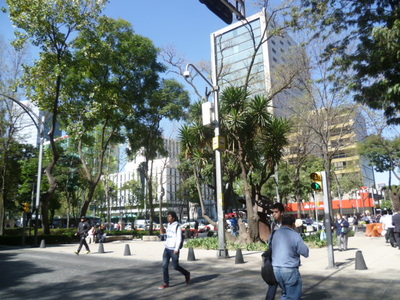
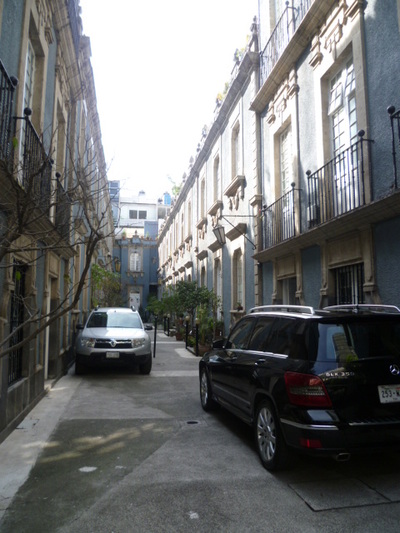
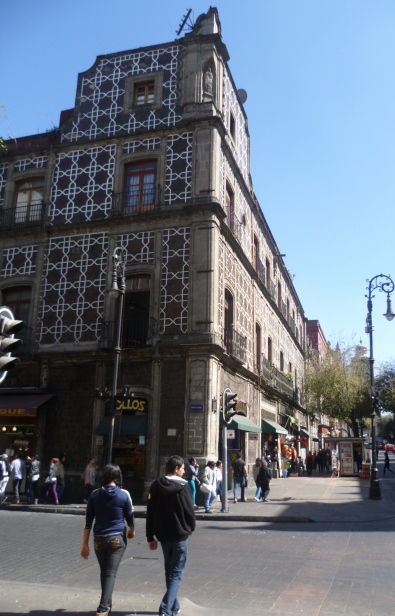
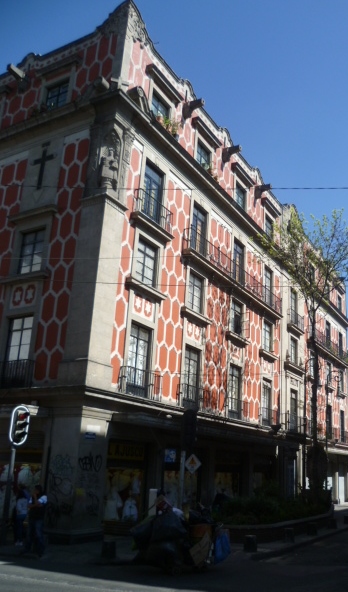
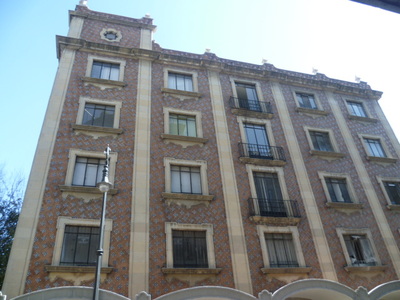
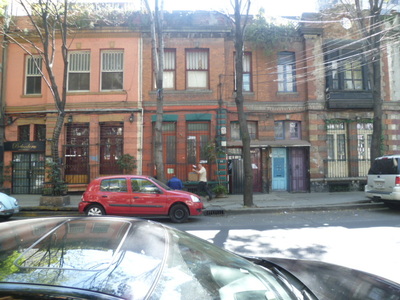
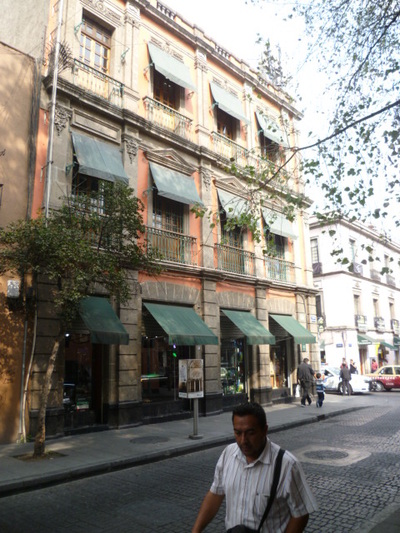
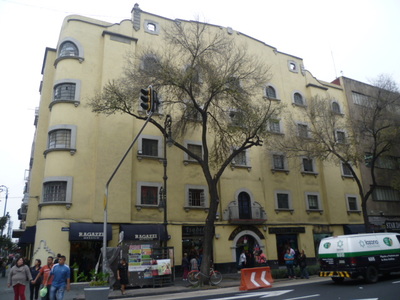
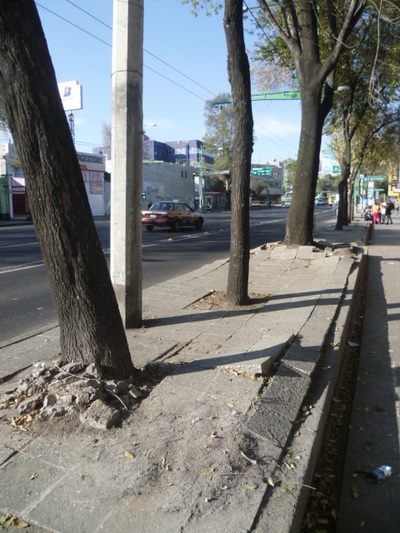
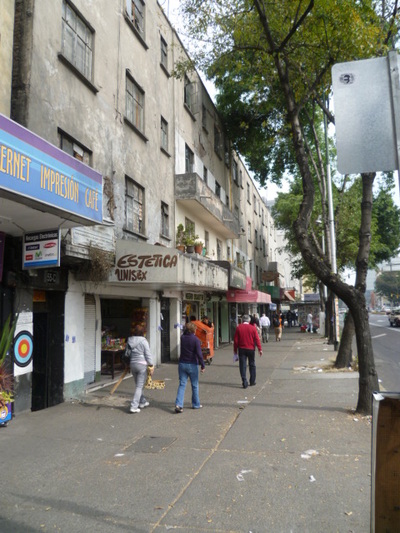
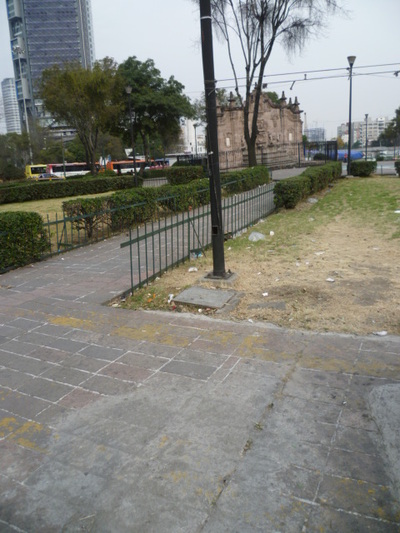
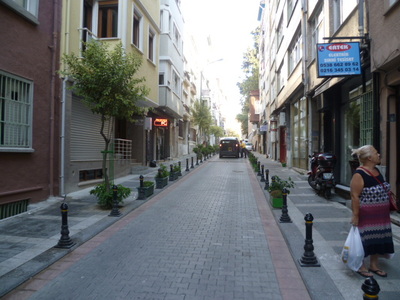
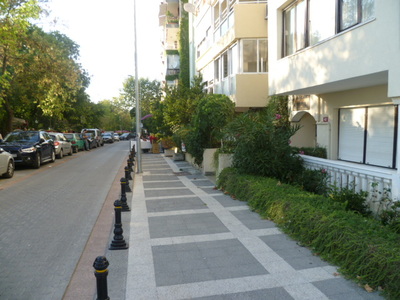
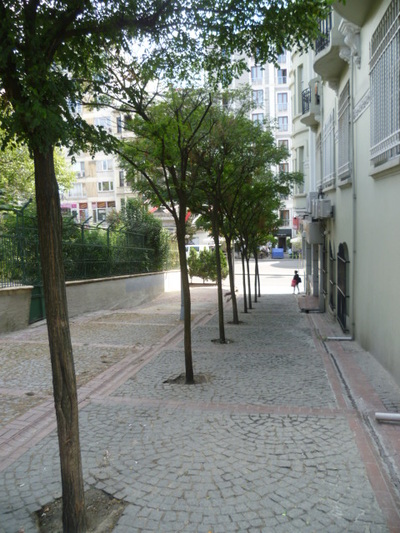
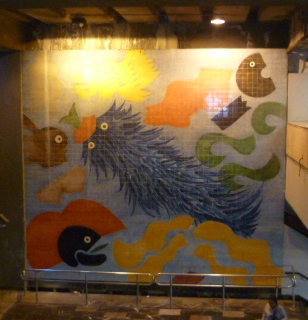
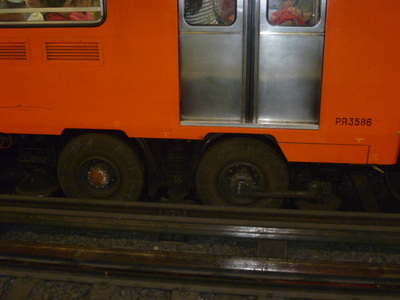
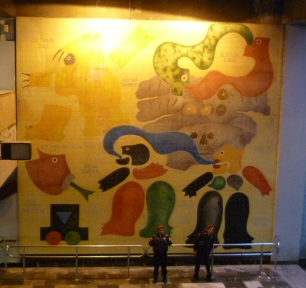
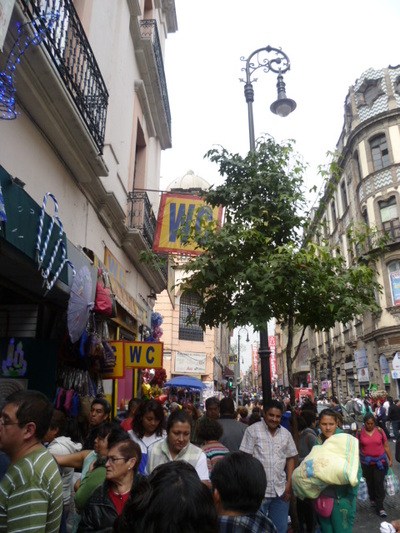
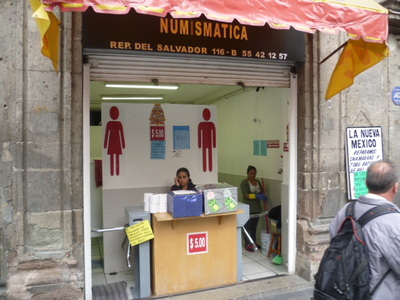

 RSS Feed
RSS Feed

